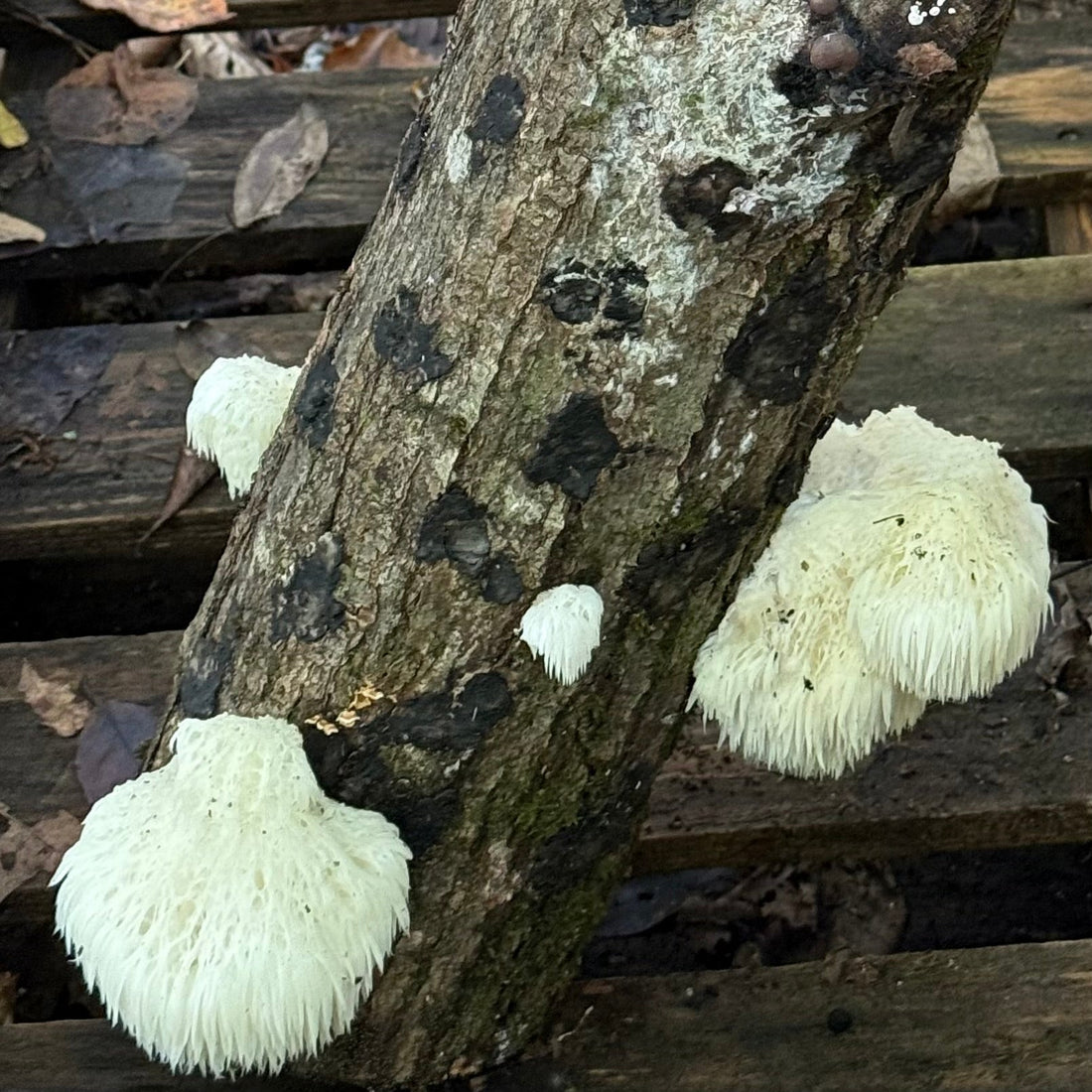Anna and I have been trying to grow lion’s mane mushrooms for a while. We think they’re cool for a couple of reasons.
To begin with, they are beautiful. Otherworldly. Like an ethereal white… well… lion’s mane in the forest.
Then there are its nutritional benefits—some long believed (Buddhist monks in East Asia used it in tea to improve concentration during meditation) and some well documented, including cognitive, neuroprotective, and anti-inflammatory benefits.
Finally, they’re a delicious culinary head fake. You take a bite of lion’s mane expecting an earthy, meaty, of-the-forest mushroom experience, but instead you get a firm, slightly briny taste with a fibrous mouthfeel and clean finish. Very similar to lobster or crab.
So, we really wanted to figure out how to grow them.
We had a promising totem going about six years ago at our old place in the woods in north Georgia, but we ended up having to move before a decent harvest. I like to think those logs are still productive and some family of black bears enjoys them. We got plenty of shiitake and oysters out of that effort. But the lion’s mane never progressed beyond an initial, tentative baby bloom.
We moved to the Ridge in the summer of 2020. In February 2021, we inoculated six mushroom totems, including two lion’s mane. All six had failed by that summer. (I think I know what I did wrong. Gonna try totems again next spring.)
With the garden and bees and chickens and dogs and a day job, I just couldn’t pull my act together to try again until last year.
In April of ’24, we inoculated a bunch of logs, this time using the “drill-and-fill” method. This involves drilling holes in a seasoned hardwood log in a diamond pattern, filling the holes with sawdust mushroom spawn, and then sealing the holes with beeswax to prevent them from drying out.
Then you wait.
We placed them in the shadows of a rhododendron in the woods near the garden and tried not to obsess over them when we walked by.
By this spring, I thought we had struck out again. Even the shiitake logs had not produced. Lion’s mane takes longer (often more than 18 months), but the fact we struck out with the shiitakes didn’t bode well.
Then, BOOM.
They arrived!
 We got a huge flush in late August.
We got a huge flush in late August.
They were good eating!
 I like to sauté ’em in butter and garlic, pop in a splash of tamari in the last 30 seconds, then season with salt and pepper. (Recipe at the end.)
I like to sauté ’em in butter and garlic, pop in a splash of tamari in the last 30 seconds, then season with salt and pepper. (Recipe at the end.)
 With any luck, we’ll get two or three flushes a year for the next couple of years.
With any luck, we’ll get two or three flushes a year for the next couple of years.
Garlic–Tamari Lion’s Mane
Serves: 2 • Time: 10–15 minutes
Ingredients
- 1 large lion’s mane mushroom (torn into bite-size chunks)
- 2–3 cloves garlic, minced
- 1–2 tbsp olive oil (or a mix of butter + olive oil)
- Splash of tamari (or soy sauce)
- Kosher salt and freshly ground black pepper
Instructions
- Dry sauté: Heat a skillet over medium-high. Add the torn lion’s mane and cook dry until it releases its water and the liquid mostly evaporates.
- Add fat: Add olive oil (or butter + oil) and toss to coat.
- Garlic: Add the minced garlic and sauté gently until fragrant.
- Season: Sprinkle with salt and pepper.
- Brown: Continue cooking until the edges are golden and slightly crispy.
- Glaze: In the last 30 seconds, add a splash of tamari and toss quickly—just enough to glaze, not steam.
- Serve: Plate immediately and enjoy hot.
